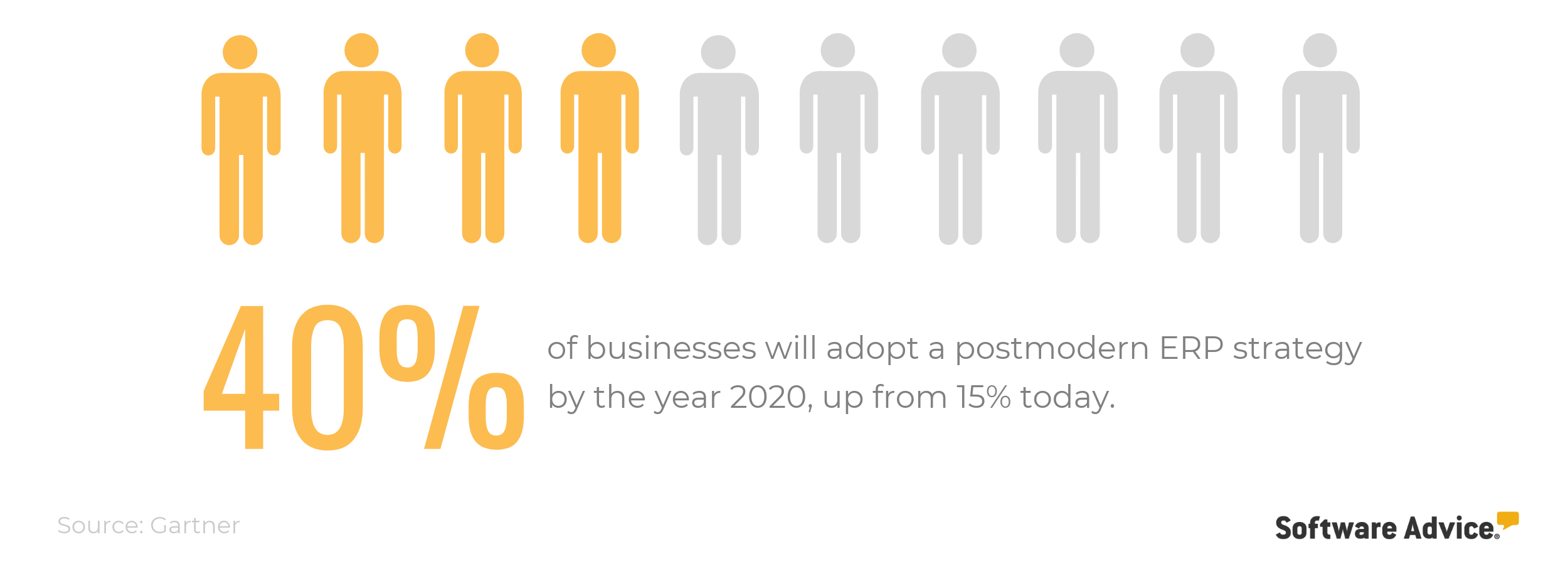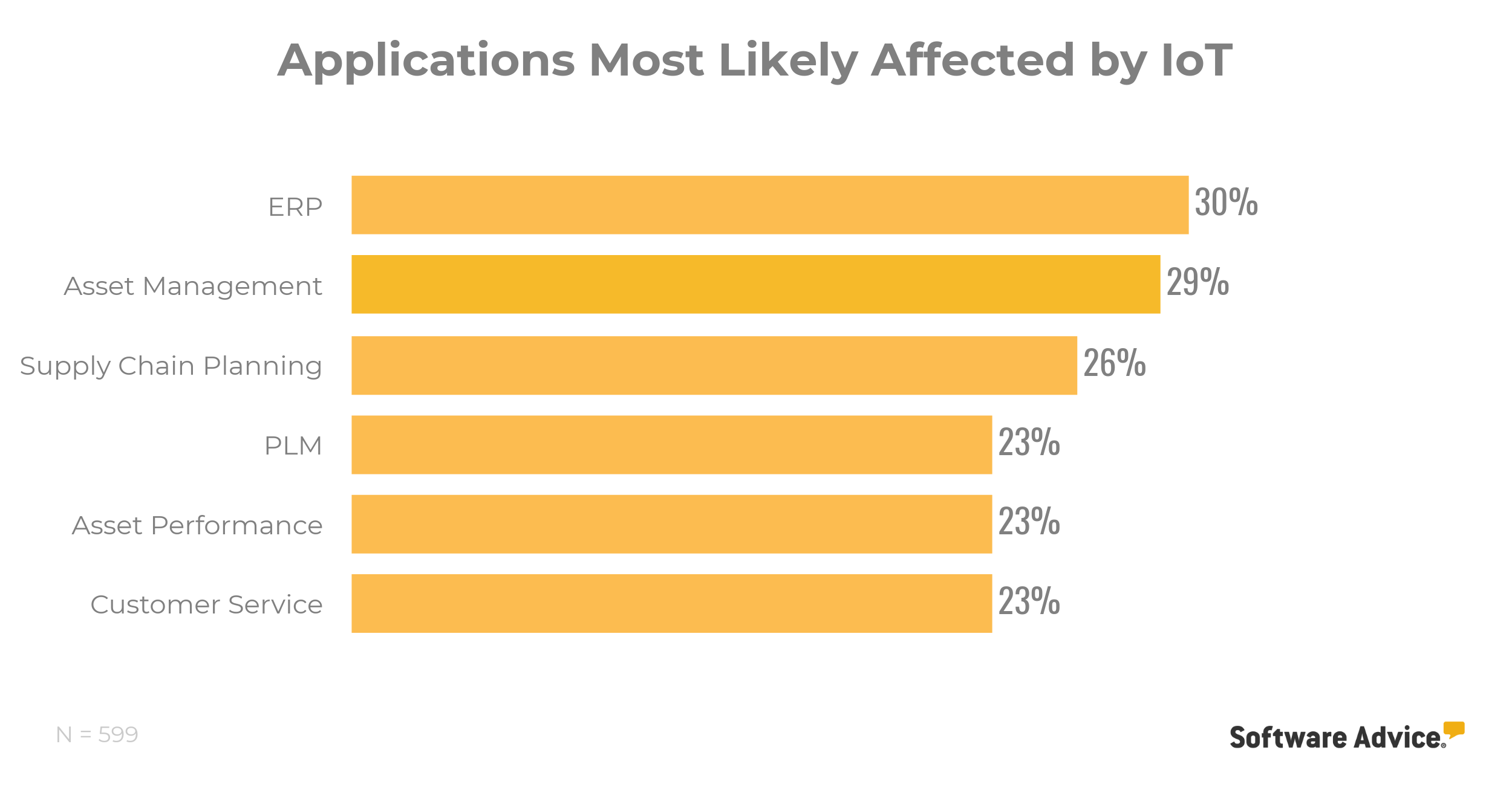The Benefits, Challenges, and Best Practices Associated With Postmodern ERP Integration
ERP software is, by nature, complex.
For businesses of all sizes and disciplines, there are tangible benefits to consolidating business processes into a unified system. But consolidation is increasingly challenging in the postmodern era, as organizations customize their systems using best-of-breed software from a variety of vendors.
Done right, postmodern ERP integration is an indispensable asset for future-focused businesses. Done wrong, the potential exists for data mismanagement, security vulnerabilities, and deployment obstacles.
There are things you can do, however, to avoid these common pitfalls.
 To overcome the challenges of postmodern ERP integration, businesses must deploy new software in piecemeal phases, practice sound data management, and thoroughly secure all connections and end points.
To overcome the challenges of postmodern ERP integration, businesses must deploy new software in piecemeal phases, practice sound data management, and thoroughly secure all connections and end points.
The benefits of ERP integration
Sure, there are risks. But the benefits of integration far outweigh any potential snags.
Businesses are taking notice, too. Gartner predicts that through 2020, software integration will account for 40% of the money spent on digital business solutions (full research available to Gartner clients). Over that same period, the number of businesses adopting postmodern ERP strategies will rise to over 40%, up from 15% today.

Here are three ways ERPs can benefit your business:
Benefit #1: Freedom to adapt
ERPs built with the freedom to integrate offer greater flexibility than those that don’t. When you implement a traditional, single-system ERP, you’re limiting its functionality to what’s included as part of that prepackaged solution. In other words: what you see is what you get.
A lot of modern ERPs include built-in integration capabilities, but most are limited to only the most commonly used products (such as QuickBooks and Salesforce). Meanwhile, an ERP system built on a more flexible postmodern foundation gives businesses the freedom to integrate however they wish. So if a newer, better CRM product comes along, you can install it with (relative) ease.
Benefit #2: Customize based on business needs
Because ERP integration allows for more flexibility, businesses can streamline and customize their workflows to their heart’s content.
Say you’re a retail organization with a monolithic ERP—you’ll probably never need the built-in manufacturing planning or warehouse management components. At best, their existence is negligible. But more likely, these functions are clogging your workflows and wasting valuable system resources.
With a fully integrated system, the idea is to start small—using only the most basic functionality—and build your ideal ERP using only the components you need. This leaner, more personalized approach is the very definition of workflow efficiency.
Benefit #3: Remain competitive
With this increased agility and freedom to customize, business can fine-tune their integrated system for maximum productivity. This empowers decision-makers to reallocate resources and brain power toward growth strategies and optimization, rather than seemingly endless workflow patch-ups and process improvements.
And here’s the reality: Your competitors are, in all likelihood, already reaping these benefits. Businesses using large, clunky ERP systems are constricted by outdated technology—putting themselves at a costly competitive disadvantage.
The common integration challenges businesses face
While postmodern ERP integration offers numerous advantages over traditional systems, they have their share of challenges too—not all of which are resource-dependent.
The following three obstacles are universal, no matter your organization’s budget.
Challenge #1: More integration means more complexity
ERP integration requires constant communication between systems, which—in turn—requires more connections and a deeper, more sophisticated data-mapping process. With all that complexity, things can get hazy in a hurry.
The internet of things (IoT)—specifically, cloud computing and mobile devices—further complicates matters.
In a Gartner survey of business leaders, 30% of respondents said that ERP software is one of the applications most affected by IoT integration, more than any other software type.

Source: Gartner
The benefits of an IoT-connected ERP system are clear, but integrating cloud-based software and widespread mobile support into ERP software—especially on-premise systems—is no simple task.
Challenge #2: Large volumes of data can result in mismanagement
Duplicate or inconsistent data is a frequent integration issue, especially when replacing an old component with similar functionality. This is problematic for a couple of reasons.
The first and most obvious is that erroneous data is never a good thing. A single misplaced decimal point or uncertain unit of measurement can trigger a chain reaction of inaccuracies throughout your entire system.
Which leads us to the second, more consequential reason: The more inaccuracies you have, the more resources are required to correct them, which could significantly delay your target go-live date. The subsequent ad hoc resource allocation puts an unnecessary financial and operational burden on your business, making an already arduous integration process all the more difficult.
Challenge #3: Insecure connections put ERP data at risk
Your ERP software is home to all of your most critical business data, including proprietary intelligence and sensitive client information. These are the crown jewels of your organization, and as any IT professional knows, protecting them is of utmost importance.
Introducing more complexity to your system through ERP integration increases the likelihood of an insecure connection, enhancing the threat level at a time when cybercriminals are deliberately targeting ERP software.
The keys to successful integration in the postmodern era
As ominous as that sounds, don’t let the inherent risks associated with ERP integration discourage you; a little preparation goes a long way in avoiding such setbacks.
In other words, follow these three best practices to achieve ERP integration success.
Best practice #1: Deploy new software integrations in piecemeal phases
There’s always a temptation to rip off the metaphorical integration band-aid, but the “big bang” approach should only be considered in rare circumstances (like a merger). Given the complexity of modern ERP systems, the best way to ensure a safe and smooth transition is to deploy new software integrations in phases.
An incremental approach to ERP integration not only helps reduce the risks mentioned above, it also gives businesses the opportunity to fine-tune the process and optimize the system prior to launch. Think of it as a condensed version of this ERP implementation infographic.
Best practice #2: Practice sound data management
Your data is useless if you don’t know where to find it. To ensure your data is routed correctly, establish pre-specified data maps and interfaces early on in the process—ideally in the planning and development stages.
Once you’ve done that, you can focus on the data management element, which includes cleansing (i.e., normalizing formats), validation (i.e., ensuring accuracy), and designation of ownership (i.e., who can access the data). Eliminating bad or duplicate data prior to integration will reduce delays and ensure a smoother transition—so users can focus on learning the new software rather than identifying and correcting errors.
Best practice #3: Secure all connections and end points
Security should always be the top priority of your organization—before, during, and after ERP integration. The proliferation of postmodern ERP and IoT-connected devices might be a new challenge for businesses, but the fundamentals of data security remain, for the most part, unchanged.
Decades-old tools like data encryption and password protection are the ideal starting point, especially as information becomes more mobile and susceptible to fraudulent access. Throughout the integration process, IT managers should be even more diligent in preaching and implementing such practices. It’s also worth considering identity management software as an extra line of defense.
What to do before you integrate
OK, so you’re equipped with the basic benefits, challenges, and best practices of ERP integration—now’s the time to put that knowledge into action.
But before you get started, you have to know where to start. Here are three things you can do right now to get the ball rolling.
Action #1: Assess your ERP system’s ability to integrate
When it comes to ERP integration, not all software is created equal. Older legacy systems are limited in their ability to play nice with recently developed best-of-breed software, and even some newer systems are hardwired for vendor-specific integration. Our database of more than 160 ERP products is a great resource for comparing features and assessing the merits of each.
Action #2: Talk to your vendor and nail down the specifics
Businesses that aren’t in the market for a new ERP should reach out to their current software vendor to identify which integrations are feasible. Ask lots of questions, be forthright in your desired functionality, and seek their assistance in devising your integration plan. Nobody knows the ins and outs of ERP software better than the vendors themselves.
Action #3: Give us a call
Still on the fence about which ERP solution is right for integration objectives? Our friendly software advisors are here to help. For a free 15-minute phone consultation, complete with a needs assessment and product recommendations, call (855) 998-8505.